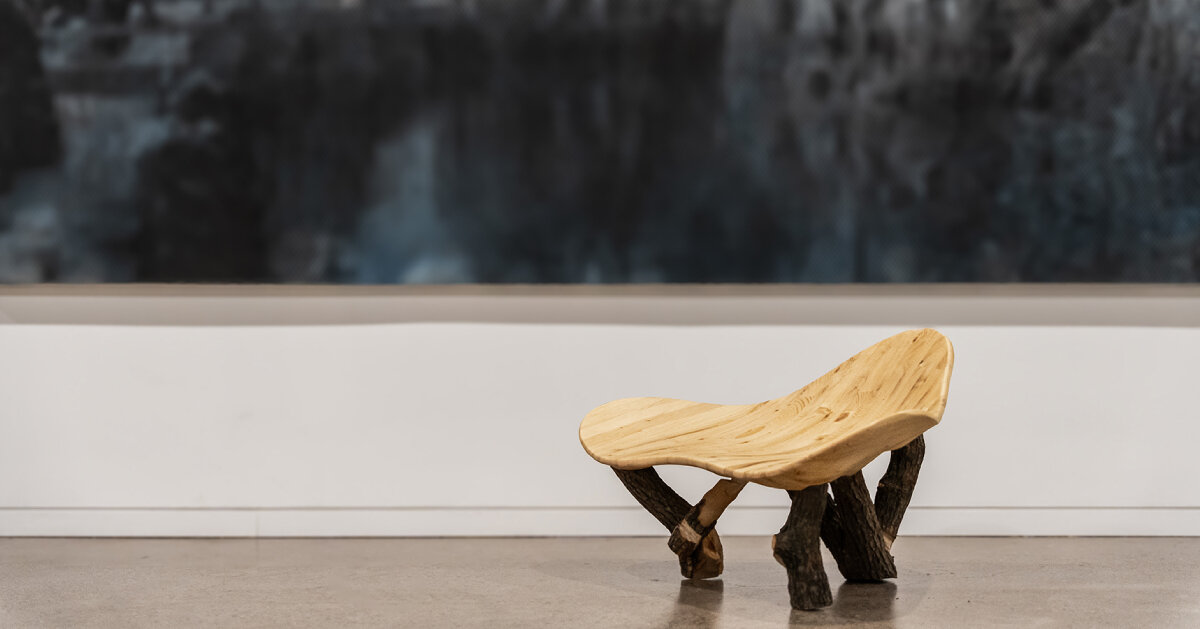
students at tongji university present meditation chair
Touching the Ground: Meditation Chair explores the harmony between living in nature and standardized industrial practices. The custom chair was realized by Tongji University student Xincheng Jiang in the AI-driven Performance-based Tectonic Studio, bridging digital design methods with robotic fabrication processes, utilizing discarded wood from the city. Ergonomically designed, it helps to support and correct the meditator’s posture by ensuring symmetry, a straight torso, and minimal static muscle activity, aiding them in achieving a positive state of mind while sitting cross-legged.
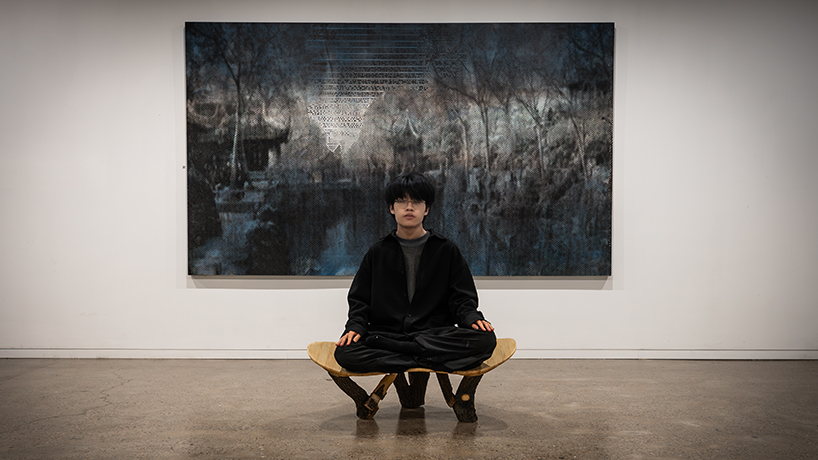
all images courtesy of Tongji University
crafted from discarded wood and digital fabrication
Considering both cross-legged meditation and semi-reclined relaxation postures, the Meditation Chair allows users to choose their preferred position for maximum comfort and relaxation. The seat surface, made from soft white spruce plywood and embracing raw textural finishes, matches the contours of a cross-legged sitting position. The legs of the chair are crafted from recycled balsam fir branches discarded during the pruning process, giving new life to discarded wood and preserving its natural texture.
Robotic fabrication technology plays a crucial role in the production, addressing the challenges typically posed by the irregular shapes and sizes of natural materials. The design team utilized dual robotic fabrication methods, employing homemade gripping jaws and robotic end-effector equipped with timber milling tools to process irregular components and achieve fine mortise and tenon joints.
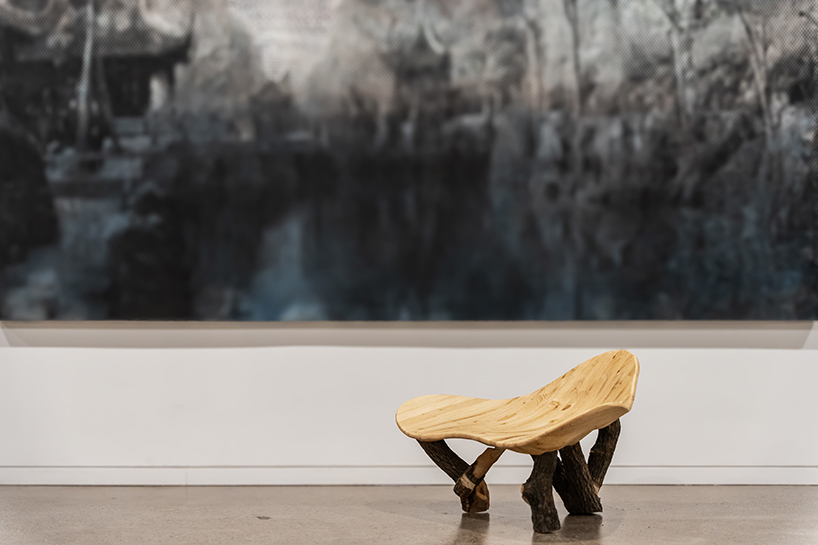
Xincheng Jiang at Tongji University present Touching the Ground: Meditation Chair
Professor Philip F. Yuan, the studio advisor at Tongji University, emphasizes that the scope of digital architecture extends beyond the digital generation of geometric forms and surfaces. In the Meditation Chair design, the blend of raw texture and modern craftsmanship creates a distinct vitality to pose a new quality productivity in the context of low-carbon development.
Inspired by Eastern philosophical thinking, Xincheng Jiang focuses on the harmonious coexistence of man and nature, creating a Zen space through the precise fusion of natural materials’ simplicity and modern technology. The primitive, irregular forms of natural branches symbolize the beauty of nature’s disorder, while the precision of robotic fabrication techniques reflects human ingenuity, achieving a balance between opposites and harmony in complexity.
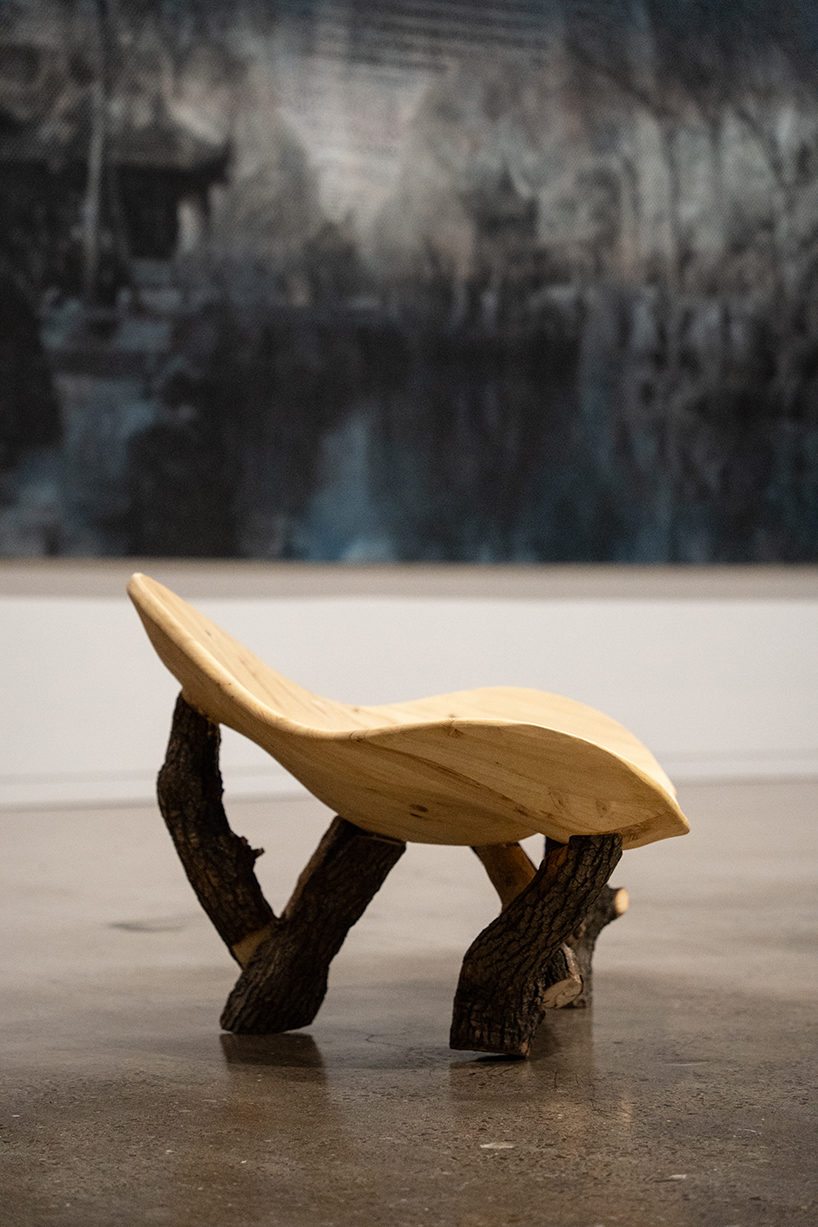
the seat surface, made from soft white spruce plywood, matches the contours of a cross-legged sitting position
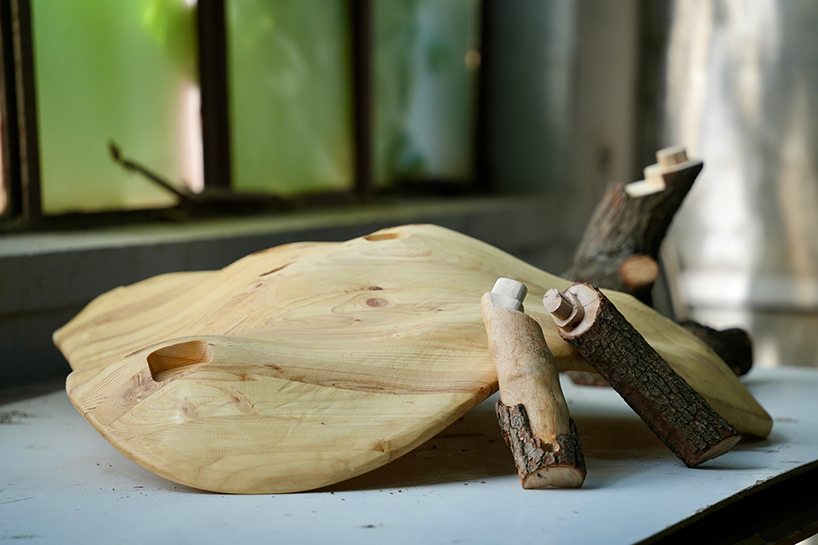
the seat is made from soft white spruce plywood and the legs are crafted from recycled balsam fir branches
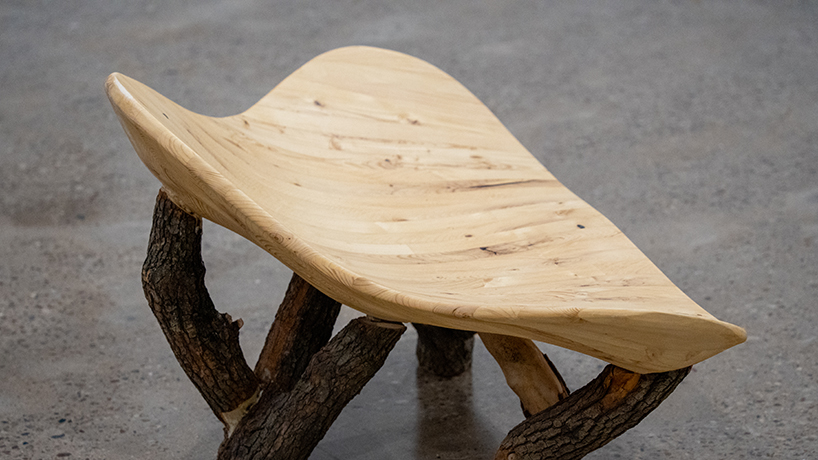
considering both cross-legged meditation and semi-reclined relaxation postures
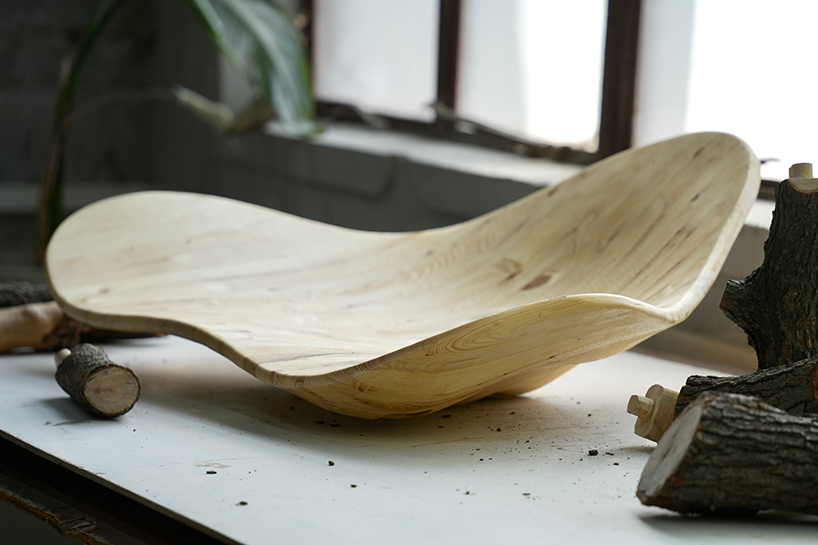
ensuring symmetry, a straight torso, and minimal static muscle activity
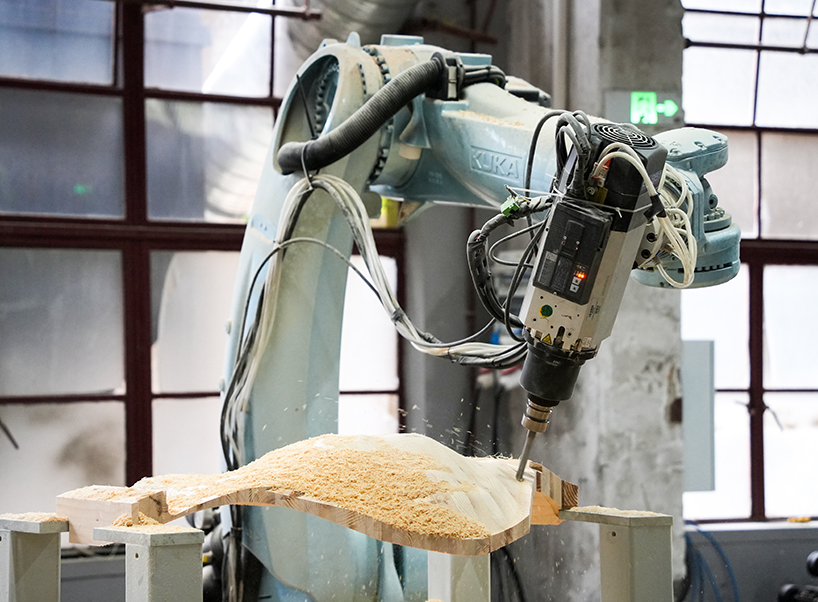
bridging digital design methods with robotic fabrication processes










